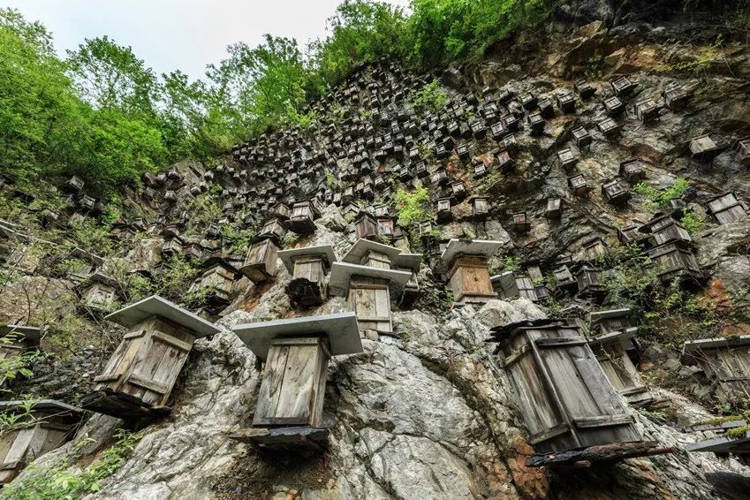A near-vertical cliff wall in the mountains of Shennongjia Nature Reserve, China’s Hubei Province, is home to over 700 wooden boxes which make up one of the country’s last sanctuaries for native wild bees.
Beekeeping has been carried out in China since at least the 2nd century AD, and roughly half of the world’s supply of honey comes from the Asian country, but few know that over 80% of the native bee population is now extinct. The introduction of the European honey bee (Apis Mellifera) is considered the main cause of the drastic decline of native Chinese bees. It has brought viral diseases, has been known to attack Chinese honeybee hives, and interfere with its mating rituals. Today, the Chinese honey bee (Apis Cerana Cerana) is listed as an endangered species, and the cliff-hanging hives of the Shennongjia Nature Reserve make up one of the few protected sanctuaries in the country.

Photo: Facebook
Popularly known as ‘the wall of hives’, this unique bee sanctuary consists of over 700 wooden boxes perched on the side of a steep cliff wall, about 4,000 feet above sea level. The boxes are meant to attract the area’s wild bees into settling in, and most of them are indeed inhabited by families of thousands of bees at any given time.
Because the hives are so densely packed together, in order to reach the higher ones, beekeepers have to use the lower boxes as steps, while trying to keep their balance. The ones near the top can only be accessed by rope, from the top of the cliff. It’s a difficult task, but a necessary one, as the location of the beehives in an inaccessible place is meant to protect their inhabitants and their honey from bears.
What makes the Shennongjia Nature Reserve so special for beekeeping is the presence of several different climates zones – subtropical, warm temperate, temperate and cold temperate – in a single area, which basically guarantees a truly diverse flora (over 1,131 species of plants) and fauna.
Because of its unique appearance and location, the wall of hives has also become popular with tourists.
Not only is it a place worth visiting, but this cliffside bee sanctuary is a lot better than having tens of thousands of bees living literally in your home…












